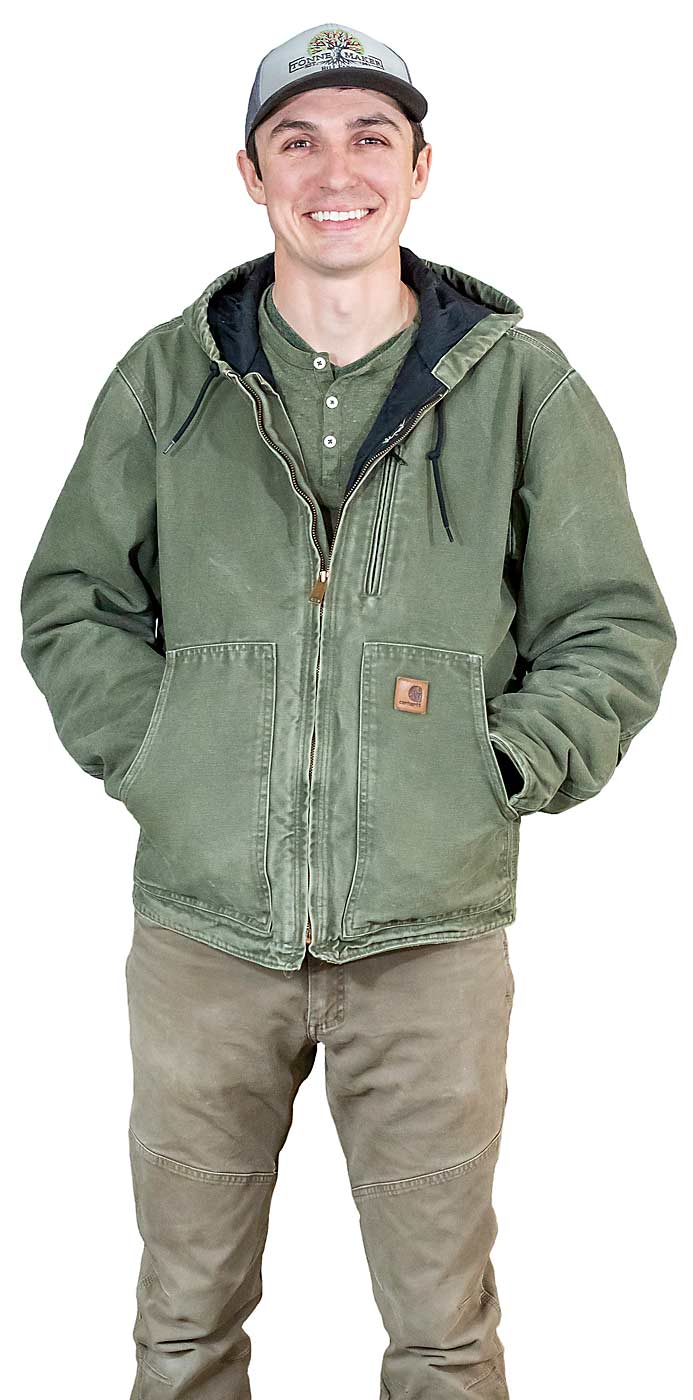family background/ Luke is a fourth-generation farmer who studied food and nutrition at University of Idaho. He’s the son of Sonia and Kole Tonnemaker.
age/31
grower/Royal City, Washington
crops/Apples, diversified crops
business/Tonnemaker Hill Farm
What is your farm’s history?
In 1962, my great-grandparents started this farm on what was originally sagebrush, eventually putting in cherries, apples, pears and some peaches. That worked until the ’80s when things started looking tough in the industry.
What adjustments were made at that time?
Dad did a few things as a result, putting in new apple varieties and adding Rainier cherries to the mix. He also put in a new pear block that was 15-foot by 6-foot spacing, which was tighter and more productive than most pear blocks at that time.
We also started selling some of our crop at farmers’ markets in Seattle, with the help of my uncle, and sending the rest to the warehouse. Somewhere during that period, Dad began the process of selling direct, making an effort to grow different crops for farmers’ markets.
Eventually that market demand reached our local farm here in Royal City, where we were turning people away from the farm.
In 1999, we opened our own fruit stand with a couple of refrigerated storage rooms so we can keep the stand running, even in the winter.
Why add direct market sales?
Once we were working with customers, we realized they wanted more choices and variety. I think Dad was a bit ahead of the curve, planting Honeycrisp in 1993, not knowing how popular it would become. We haven’t slowed down, planting most any new variety since.
What modifications are being done on the farm?
One of the main things that comes to mind is that we’re keeping our blocks productive and cost effective. We have a few blocks that have expiration dates, such as the old 12-foot by 20-foot pear block that was planted by Grandpa in the ’60s.
Pears have been such a nice crop for us, but they are 3D trees and we can’t pick or prune them with a platform. Everything that we have on the farm and is being planted must be platform-ready.
Those crops need to be part of the plan, even our peaches and nectarines. This helps us better manage our labor costs.
What about the farm market?
Besides growing our diversified farm, we’re looking at making this place more of a destination. We started down this path, now reaching into unusual crops or hard-to-find varieties. It seems like here in Washington, there’s a diverse amount of newer apple varieties, but not the heirloom ones.
So, we’ve been putting in as many of those as we can. Now we get calls from people from around the country looking for certain varieties. I also think making a whole-farm experience would be beneficial.
I think that adding activities the public can take part in and get to know where their food comes from, hands-on, is something we want to do more of.
What are your ideas for the future?
We’ve survived over the years because we’re super cautious about borrowing, but it’s also the reason we’re still working the same 126 acres. For every two farms that gamble with loans, there’s probably one that doesn’t make it. Sweat equity is what we do here.
I’m not saying it’s the right way to do things, but it’s the safe way. And when you’re intent on keeping the farm in the family, that may be the best way to do that. I think that if you can form relationships with other businesses and you can formulate a plan that benefits everyone and spread out the risk, making an investment may be the way to go.
We have a small family and we have a lot we’re trying to get done. It’s not good to spread ourselves too thin. Rather than doing too many things, not as well as you’d like, I’m hoping to get some help to make things better. For instance, Dad is changing water twice a day, and that’s not where we need to be as a farm. My main priority is to get more help so we can spread the load out.
What resources would you recommend to younger growers?
I’d say it may be the right time to start a career in farming. There’s many resources out there to learn how to do it.
University extension specialists are there to help and professors are there for you. I’ve found that they want to see their work make it into the field, not just on the shelf at the extension office; they want it being applied, saving farms.
—TJ Mullinax







Leave A Comment